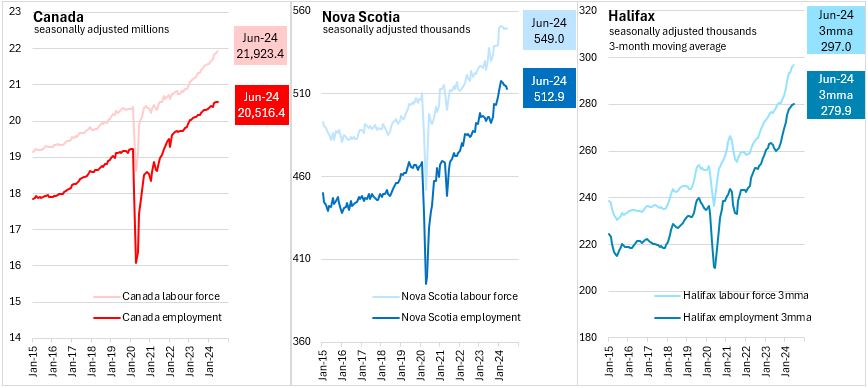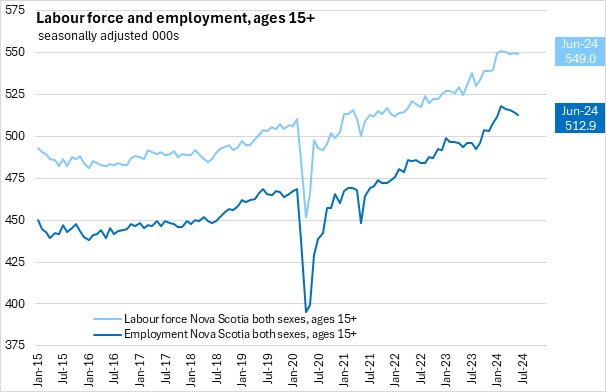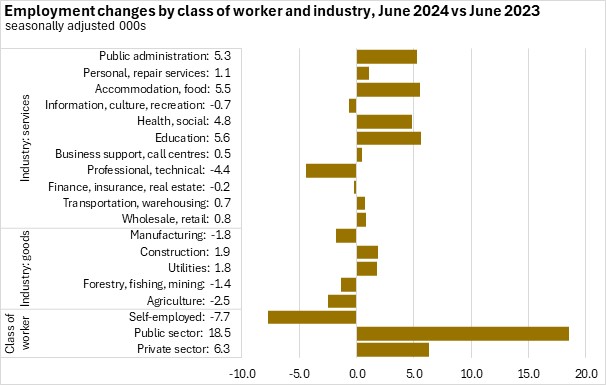Labour market trends for the construction industry, June 2024
The following trends and statistics were aggregated from releases from the Economics and Statistics Division and Business Intelligence and Labour Market and Analysis, Service Canada – Atlantic Region.
Click here for full details from ‘Labour Market Brief, Atlantic Region.‘
Click here for full details from the datasets ‘Labour Force Survey, June 2024‘ and ‘Labour Market Trends, June 2024.‘
Labour Market Brief – Atlantic Region
- Construction is among the fastest growing industries in Atlantic Canada
- The construction industry saw 9% employment change in April-June 2024 vs. the same time last year.
- Employment in Atlantic Canada rose during June 2024 by 4,500 jobs
-
The unemployment rate increased slightly in June to 7.6%, hovering just below a 12-month high (7.6%)
Labour Force Survey, June 2024 – Nova Scotia

Month over month (June 2024 vs May 2024, seasonally adjusted)
In Nova Scotia,
- Labour force decreased 900 (-0.2%) to 549,000
- Employment decreased 1,700 (-0.3%) to 512,900
In Halifax, (3-month moving average)
- Labour force increased 1,000 (+0.3%) to 297,000
- Employment increased 300 (+0.1%) to 279,900
Year-over-year (June 2024 vs June 2023)
In Nova Scotia,
- Labour force increased 18,200 (+3.4%)
- Employment increased 17,100 (+3.4%)
In Halifax, (3-month moving average)
- Labour force increased 19,700 (+7.1%)
- Employment increased 18,500 (+7.1%)
Labour Market Trends, June 2024 – Nova Scotia

- Nova Scotia’s seasonally adjusted employment declined by 1,700 (-0.3%) to 512,900 in June following a decline of 900 (-0.2%) to 514,600 in the previous month
- Compared with June 2023, Nova Scotia’s population over the age of 15 increased by 26,800 (+3.1%), while the labour force grew by 18,200 (+3.4%), and employment increased by 17,100 (+3.4%)

- Compared to June 2023, there were gains in employment for private sector workers and public sector workers, and a decline in self-employed
- Over the last 12 months, employment was up in most sectors with the largest gains in education, accommodation/food, and public administration. The largest decline was reported for professional/technical services
